
Click and listen to Sybil








11 Climate and Science
12-17 What can be done
18-21 Should we all be vegan

22 Meat-free meat, egg-free egs! etc.
24-25 Careers: Air Traffic Controller
26-27 TVETs and entrepreneurs
28-29 Tetrapak inventor - long-term
34-37 Inventors - hectic
38-41 Fashion and more fashion
46-49 Data Centres and climate
42-43 Tech in 2024 - need a phone?
50-53 Is nuclear an option?




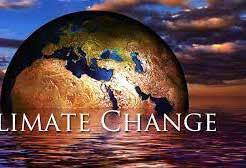
06-07 Editor’s Letter

54-55 The guitar - for everyone
56-57 It is movie time
58-59 March - Autumn is now 62 Next issue



02-03 Year Calendar
08-09 Contributors
10 Holler at us
60-61 We need writers



So we are off to a good start. Finished with all the holiday stuff. Reality is here.
That also means Hola is here!
This time we focus on something that must concern all of us: Global warming and climate change. There is no way out of it. There is no Planet B.
We look at solutions! I think we all kow what the problem is.
It is much more fun to look at what can be done. And especially what can we do as individuals. We can do a lot more than what we might have envisioned.
Meat production (yes, cows again) might be
too much for ans? that can Nuclear? the it - maybe?
Plenty of things. do it. Like Greta.
Need a new cell what is coming.
Dune part two be epic. Feel like being what false Bay Good read!
Hola is here to give you a break from all
We are also serious, but it is now called
for our planet. We can be vegcan do a lot, but it is complex.
new mini-reactors could do things. It just takes us all to go Greta.
cell phone in 2024? look at coming. AI is on the march. two is coming. This is going to being an entrepreneur? Look at Bay TVET has to say.
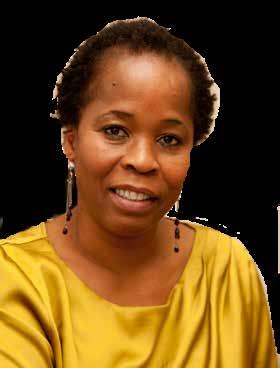
all the school stuff. called edutainment.
Sybil Otterstrom Editor and CEO
Want to be a contributor?
Wanting to write like a pro?
You CAN!
look firther and see how you can become one.
... and it is a good feeling to entertain and inform.
Masiziba Hadebe is doing her Master’s in Agricultural Economics at the University of the Free State (UFS). She is driven to make a change and is a passionate volunteer for community projects. She loves reading and writing about science, agriculture and anything in between. She believes you can wear a smile whatever the weather!
My name is Lerato Pitso. I am from Maseru, Lesotho. I am a Sociology and Criminology student at UFS and Miss Supranational Lesotho 2023. When I’m not a model and a student, I write about my philosophies on life as well as expressing my feelings on paper. I hope that my views will aid in the social development of the next person.

And we are honoured to also have industry-views from:
Edith Wynne-Trollip: - Curriculum Support and advise, Overberg District
Nadia Hearn - Founder of Get-Published
Ashalia Maharajh: - Founder & Director, Sivuka Consulting (Pty) Ltd
Thozamile Mvumvu: - CFE Programme Manager, False Bay TVET
Daniel Roos - Account Executive, Transform Marketing



Artvilla Dakamela, 22, another wizard from the literature world, he is an Accounting student at the University of the Free State. He has written for the Initiative for Creative African Narratives (iCAN) amongst others. He currently resides in DurbanKZN - and is a very enthusiastic reader and writer.
My name is Molatelo Kate Kgatla, I’m 24 years old. I was born and raised in Lenyenye. I’m a grade 2 teacher at Vunza Teddy Bear Learning Academy, an author of a book titled her jouney as a young mother. I became a mother at 17. It influenced me to write about my personal journey to try and help someone that could be going through the same. I love writing and I love my 7 year old daughter and life.


Lesly Malose Mahapa is a singer/writer/poet. He started writing at the age of 14 and has since been on a journey to pursue his music and writing career. Lesly is currently working with an indie group ‘MozSouth’ based in Ivory park, Midrand. Lesly is also a brand ambassador for a local clothing line “Boi Boi apparel”

Editor & Publisher
Sybil Otterstrom
sybil@romele.co.za
Advertising sales
Next level Management services cc
011 614 5046 076 360 1792
sybil@next-level.co.za
Publishing
Romele Publications cc 32 Eleanor street
Troyeville 2094
011 614 5046/076 360 1792
Enquiries
Romele Publications cc 32 Eleanor Street
Troyeville 2094
Production and Art Direction
Ivan Otterstrom
ivan@romele.co.za



Climate change, global warming, ecological disasters, tsunamis, earthquakes and much more.
It might all be the same name for the woes we face right now. It all comes down to human activity.
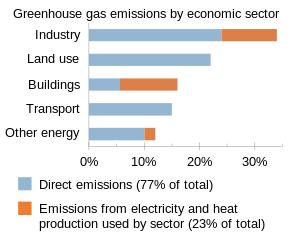
We have all the information at hand that will tell us that something has to be done. We are probably at a tipping point.
The COP conferences represent something very clear: everybody coming together to identify the problems, but solutions are not so clear.
There are plenty of things we can do without being dramatic. And that is what we will try to unravel on the following pages.
We may think that what we as individuals do is too insignificant, but hey, far from it. Remember, it is not just me and you, but we can count millions of people across the globe.
The thing is: it is OK to dream of big projects, but it might just be the ‘small’ things that will save us.
The message is clear: we have to be together. There is no Planet B.
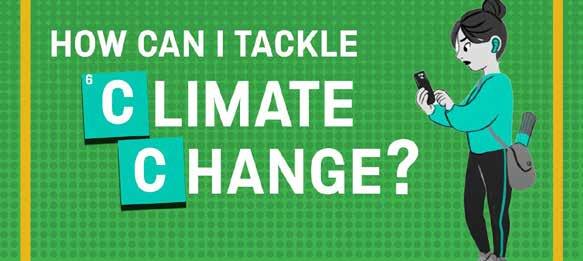
Wiki says: “In common usage, climate change describes global warming—the ongoing increase in global average temperature—and its effects on Earth’s climate system. Climate change in a broader sense also includes previous long-term changes to Earth’s climate.
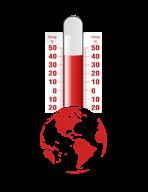
The current rise in global average temperature is more rapid than previous changes, and is primarily caused by humans burning fossil fuels. Fossil fuel use, deforestation, and some agricultural and industrial practices add to greenhouse gases, notably carbon dioxide and methane”.
This is really clear. We know the signs as well: wild fires, floods, heavy rains, draught and so on. The ice caps are melting fast now and it all comes down to the global rise in global temperatures.
Before we can really look at what can be done, we might look at the reasons.
We may think that it is the industrial burning of coal and oil that is the biggest culprit – by far. But is it really so?
Wiki says: According to Food and Agriculture Organization, around 30% of Earth’s land area is largely unusable for humans (glaciers, deserts, etc.), 26% is forests, 10% is shrubland and 34% is agricultural land.
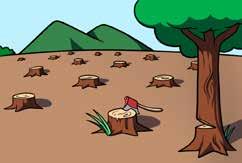
Deforestation is the main land use change contributor to global warming, as the destroyed trees release CO2, and are not replaced by new trees, removing that carbon sink.
Between 2001 and 2018, 27% of deforestation was from permanent clearing to enable agricultural expansion for crops and livestock. Another 24% has been lost to temporary clearing under the shifting cultivation agriculural systems. 26% was due to logging for wood and derived products, and wildfires have accounted for the remaining 23%.
Agriculture and forestry face a triple challenge of limiting greenhouse gas emissions, preventing the further conversion of forests to agricultural land, and meeting increases in world food demand.
A set of actions could reduce agriculture and forestry-based emissions by two thirds from 2010 levels. These include reducing growth in demand for food and other agricultural products, increasing land productivity, protecting and restoring forests, and reducing greenhouse gas emissions from agricultural production.

On the demand side, a key component of reducing emissions is shifting people towards plant-based diets. Eliminating the production of livestock for meat and dairy would eliminate about 75% of all emissions from agriculture and other land use.

Livestock also occupy 37% of icefree land area on Earth and consume feed from the 12% of land area used for crops, driving deforestation and land degradation.

Let it be said: the reduction of green-house gas emissions can immediately impact this crisis. Carbon-dioxide and Methane are the clear culprits. Methane is 28 times more ‘potent’ than carbon-dioxide.
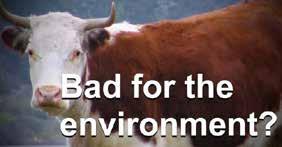
The culprit in terms of methane are cows. Yes, cows. The cow burping is methane.
According to United States Environmental Protection agency, there are some 1,5 billion cows in the world. They produce some 104 million tons of methane per year. This is HUGE all by itself.
The clear alternative to cows is clear: we need to decrease our consumption of meat and become much more ‘vegan’.
If we still would like to have milk for the tea, we can look at the internal workings of a cow. Grass is the thing here that causes the burping cow. Can we reduce this?
However strange it might sound, we can add a bit of seaweed to the animal feed. Again according to above, adding just less than 1% of seaweed (special plant though) to the animal feed, we can reduce the cows methane emission by 98%.
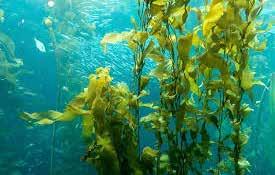
Again, we are talking massive numbers here.
The other big thing about cows is that they take up a lot of space. Look at above: they take up 37% of all ice-free land on the entire planet. Could we do better?
The solution is not to store cows like sardines in a tin. That is animal cruelty! The longer-term solution is to have less cows around and more land for other uses.

Such uses can be for plant-based diets and for forests. Forests are really good at absorbing carbon-dioxide in the treemass. And we need to ensure that the carbon-dioxide gets removed from the atmosphere NOW.
It is a fact that deforestation is a big problem. With more people we need more food. However, it does not necessarily mean that we need more land area to grow the food. Less cows can release 37% of land area for plant-based food production. Different plants (plant productivity) can mean a lot more than we might realise.
We might see that water-intense plants (potatoes!) will take potable water away from drinking purposes. Fact!

That will mean that we need to look at plants that will require less water or we turn to growing certain plants in the oceans. Masiziba has written several articles about this, and this is realistic.


It is correct as Masiziba once said it: “Coal is not green”. And also that coal does not mean electricity and that electricity does not mean coal.
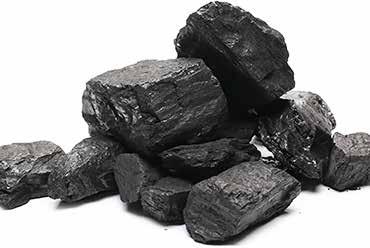
So it is complicated. Fact is that coal is well-understood. It is (relatively) cheap to mine and we know how to construct a coal-fired power-plant. Any national grid connection is found where people live and where power-plants are built.
Windmill farms and solar farms do take up a lot of space and cannot be built within a city (duh!), so the added problem is that the grid needs to be extended to outlying areas where electricity production can take place.
There are costs to wind and solar that are not associated with the direct manufacture of the solar panels and windmills.
All said, the trend is clear. According to the article here which says: “IEA report says 50% growth last year keeps hope of achieving Cop28 climate target of tripling clean energy capacity”

The article also says ‘Record rates of growth across Europe, the US and Brazil have put renewables on track to overtake coal as the largest source of global electricity generation by early 2025, the IEA said. By 2028, it forecasts renewable energy sources will account for more than 42% of global electricity generation.

Of course we see wind power being dominant in China, US and Europe. Their infra-structure can easily be adapted to cater for additional power sources.
If this can be achieved (and it looks feasible) we have a chance to meet the COP goals of reducing green-house gas production and thereby bring the increase in global temperature within the COP goals.
It is interesting to see that China is the absolute leader in solar power. It is also necessary as China is the heaviest ‘polluter’ in terms of burning fossil fuel right now.
There are plenty of other initiatives that can make an impact, but solar and wind are right now the best options due to cost and locations.
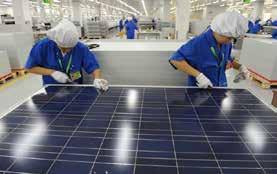
Let us face it: if the greatest ‘polluters’ can shift to renewable energies (US, China and Europe), based on their current infra-structure that will allow easy access to the grid, the global impact is massive. Far higher than small countries with very limited energy consumption.
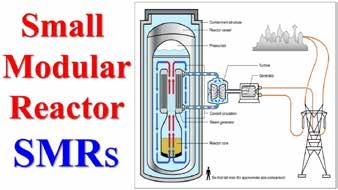
And nuclear? Maybe

Maybe it is worth considering if the future should force us to be vegans. If the only real impact on global warming is to reduce the amount of slaughter animals out there and turn our diet into being far less meat, we might just have to get on with it.
The overall question is of course: are humans designed to be vegans or are we really carnivores?

There are several degrees of being a vegan. Some are against the slaughter of animals (fair enough), some are looking broader and refrain from using any animal-derived products. And everything in-between I think.
Let us just look at the ones who would like to drop (some) meat from the diet (where practical).
Wiki says: “Vegan diets tend to be higher in dietary fiber, magnesium, folic acid, vitamin C, vitamin E, iron, and phytochemicals, and lower in dietary energy, saturated fat, cholesterol, omega-3 fatty acid, vitamin D, calcium, zinc, and vitamin B12.
As a result of the elimination of all animal products, a poorly planned vegan diet can lead to nutritional deficiencies that counteract its benefi-

cial effects and cause serious health issues, some of which can only be prevented with fortified foods or dietary supplements.
Vitamin B12 supplementation is important because its deficiency can cause blood disorders and potentially irreversible neurological damage”.
In essence: if you want to be a vegan, you have to seriously look at what you will then eat and ensure that you get the necessary supplements as well.
It does not necessarily mean that we are carnivores either. Supporting climate goals by reducing meat intake is surely worth it. It does not mean we need to totally cut out anything animal-derived.

I found an interesting article here.
What it states is that yes, we can be vegans, and we can get all the necessary essential foods from a plant-based diet. That also covers the B12 vitamins, the Omega’s and the proteins.

However, it also states that we need to seriously analyse the diet to ensure that we actually do get all elements needed.
Conclusion: in the greater global-warming debate, we might just drastically reduce the meat intake without becoming 100% vegan!

Is it hard to just reduce the meat intake? Not really. It is more a matter of habits and attitudes, because the alternatives are out there and they are being bought.
Let us look at a few things:

If we look at Checkers and see what they have in plant-based foods, we see the entire variety from Frys and from Simple Truth.
Here we see the traditional sausages, burger patties, schnitzels, meat-free polony, mince and much more.
It is all there and it only takes us to get used to it. Maybe we can use the plant-based sausages at the breakfast table? Or stick to the plant-based patties.
Does it taste? trust me! Yes, there is hardly any difference in either taste or consistency.
We can also go for fast-food vegan offerings:
The plant-based burgers (from fast-food

outlets) accounted for 28% of the total burger market world-wide.
First of all: it is huge, secondly it shows that we are all being more conscious about things!
Burger King is also up there: their plant-based burgers are there, but not certified vegan (they are cooked on the same grill as the meat patties). Good enough to me, but not to certified vegans.
The message is really: there are plenty of options out there. The products do exist and they are all made to be nice tasting and offering the same type of eating satisfaction as other products.
The interesting part is the growth rate in consumption. The plant-based products are chosen by a lot more consumers compared to just a few years back. Growth rates of 100% or more are not unusual anymore.

What is also says is that we might see a future where the plant-based products are marketed as the norm and not as an exception. The ‘meat’ counter may show us meat-bangers and plant-bangers – side by side.
There are the almond-milk and the soy-milk – side by side.
We need now to get used to new words:
Meat-free meat: yes, it looks like the bangers, but it is plant-based Finless fish: This is a bit more difficult, but yes, there are products out there already. Slaughter-free meat: this may be lab-grown meat.
Egg-free eggs: yes indeed.
And a lot more!


The term is now ‘cultured’ meat. It is not from a lab anymore. It is coming out of the extruder now.
However, it is not vegan at all!
Wiki says: “Cultured meat is a form of cellular agriculture where meat is produced by culturing animal cells in vitro. Cultured meat is produced using tissue engineering techniques pioneered in regenerative medicine”.
Sounds about right!
Is it the future? Not to vegans. It is still meat.
So why should we bother? Well, if we really want to eat meat but also want to be eco-friendly this is the way to go.
Is it there yet? Not really. There is a restaurant in Israel serving cultured meat. But this is a novelty.
It is still very much at the trial stage and there also an element of government approvals.

There is still a long way to go, but the genie is out of the bottle, so it will of course happen. Maybe sooner than what we imagine.




For you to pursue your career choice.
You need to pass your National Senior Certificate!

“ it is in your hands “
- Nelson Rolihlahla Mandela


The Eastern Cape Department of Education encourages learners to choose suitable career path, by collecting information that will help them pursue their career / field of study.

Have you seen the movies with the air traffic controller talking the pilots down safely? Or where they guide the entire airport? Ground movements and in the air?
It looks fascinating, but how to get there?

I looked at the Air Traffic & Navigation Services website (www.atns.com). They do all the training in South Africa and it is really impressive.
They do more than the training. They are actively involved in advisory roles, planning and much more.
Let us just look at what they say themselves:
“Welcome to Air Traffic and Navigation Services SOC Limited, the home of expert Air Traffic Control and Management solutions for South Africa as well as 10% of the world’s airspace”
About the training:
“The ATNS Aviation Training Academy (ATA) is a unique organisation in terms of the training on offer. Not only do we provide Air Traffic Services and Engineering Training to our staff members, but also provide a wide range of aviation-related and safety-related courses throughout the Continent and into the Middle East.
As an International Air Transport Association (IATA) regional training provider, the ATNS ATA was awarded IATA’s Worldwide Top Regional Training Partner for several years running.
But let us just focus on the training side.
There is sort of the Air Traffic 101: ‘Ab Initio (Core Content) (ICAO 051). The aim is:” To develop the knowledge, skills and attitudes required to enable the students to provide a support service to AT/AIM in the collection, processing, production and distribution of Aeronautical Information […]”. 19 weeks.
From here one can specialize.
I think this one is the ground controller: ‘Aerodrome Rating (ICAO 052)’. 11 weeks and there are a few prep courses as well.
This is the one where we get to sit and talk to the pilots (I think): ‘Approach Procedural (Non-Surveillance) Control Rating ( ICAO 053). 10 weeks.

Here is the crowning glory: ‘Approach Radar (Surveillance) Control Rating (Icao 054 And 055)’. The aim is: “To develop the knowledge, skills and attitude of the learners to enable them to commence OJT, as an Area procedural and radar controller and successfully complete the required validation”. 16 weeks!

OJT = On The job training. They are not going to let us lose in the control tower with the radar going.
If Air Traffic Controller is you, set aside nearly a full year!
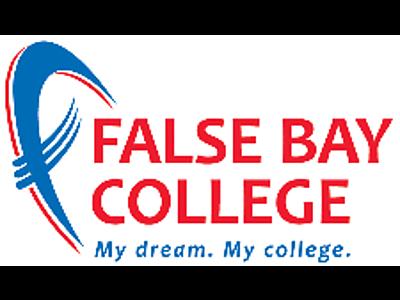
Entrepreneurship is an exciting journey that can lead to incredible opportunities, but it can also be filled with challenges. One of the biggest challenges you may face as a young entrepreneur, is dealing with failure and rejection. However, these obstacles can also be valuable learning experiences that help you grow and succeed in the long run as you grow.

Failure and rejection are expected parts of the entrepreneurial journey. If you have not encountered them, you soon will. When they do occur, it is important for you to remember that every successful entrepreneur has faced setbacks along the way.
The key is to learn from these experiences and use them to your advantage.
One of the most important things you can do to overcome failure and rejection is to develop a Growth Mindset. Instead of viewing setbacks
as a reflection of your abilities, see them as opportunities to learn and improve. Contrary, a Fixed Mindset will make you to withdraw and give up on your dream, and this is not what you want. The Growth Mindset can help you bounce back stronger and more resilient than ever, from any setback and challenge.
Our personal development workshop will also play a crucial role in helping you overcome challenges. By investing in yourself and your skills, you can build the confidence and resilience needed to navigate the ups and downs of entrepreneurship and life in general. The personal development workshop can help you improve your communication skills, enhance your problem solving abilities, and boost your self confidence.
Another important aspect of overcoming challenges is to seek support from your immediate networks. Whether it is family and friends, or mentors, having a support system can make all the difference when you are faced with failure or rejection as an entrepreneur. They can offer advice, encouragement, and perspective to help you keep going when things get tough.
Therefore, it is essential to remember that failure is not the end of the road. Many successful entrepreneurs have experienced multiple failures before achieving success. The key is to persevere, stay focused on your goals, and keep pushing forward.
Setbacks are an inevitable part of the entrepreneurial journey and life in general. By developing a growth mindset, investing in personal development training, seeking support from others, and persevering in the face of challenges, you can overcome these obstacles and achieve your entrepreneurial dreams. Remember, every setback is an opportunity to learn and grow stronger.
 Thozamile Thomas Mvumvu
Thozamile Thomas Mvumvu

Never give up! That is what characterizes an entrepreneur (or inventor). Of course it can be technical challenges, marketing, financing – anything. So let us look at a good example:
Anders Ruben Andersson (Rausing) was born in 1895 in Råå, outside of Helsingborg in the south of Sweden.
In 1919 he earned a scholarship from SSE to continue his studies at Columbia University in New York City and obtained a MSc in Economics in 1920. Experiencing self-service grocery stores for the first time during his stay in America, Rausing realised that this system, yet unknown in Europe, was going to be part of a new way of retailing.

Returning to Sweden in 1920. His company Åkerlund & Rausing was the first packaging company in Scandinavia.
At the time, non-carbonated drinks such as milk and juices were sold in heavy and cumbersome glass bottles and Rausing was determined to find a way of implementing the new, modern packaging technology. With the aim of producing a carton container for liquid foods, similar
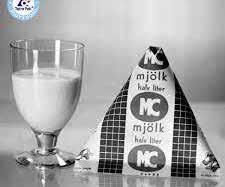
to the hygienic and practical wax-coated paper cartons Rausing had seen overseas, Åkerlund & Rausing created the plastic-coated carton tetrahedron, patented on 27 March 1944.
In 1951 there was still no viable packaging material for the new package, and efforts to develop packaging material increased. Finally, in 1952, the first machine producing tetrahedron cream packages was sold to Lundabygdens Mejeri, a local dairy.
The new packaging system was not an immediate success and the company had difficulties throughout the 1950s, with Rausing continuing to spend large amounts on development.

Tetra Pak’s commercial break-through did not arrive until the mid-60s with the new Tetra Brik package, introduced in 1963, and the development of Aseptic technology. The late 1960s and the 1970s saw a global expansion of the company, much due to the new Tetra Brik Aseptic package, debuted in 1968, which opened up new markets in the developing world and sparked off a virtual explosion in sales.
After 30 years, Rausing’s venture was successful and Tetra Pak eventually became one of the leading food processing and packaging companies in the world.

We added two new exhibitions to our collection on the floor. The 4IR and Mirror Maze exhibitions
The 4IR exhibition currently hosts the Humanoids (two small ones and the big one called Pepper), Virtual reality Station, Augmented Reality and the interactive displays integrated with of a number of TV screens.
This concept is through the touch screen located at the entrance to the center. Interactive display section has been created where visitors are encouraged to use traditional touch screens to immerse themselves in games and content around Science Technology Engineering and Arts and Mathematics (STEAM).
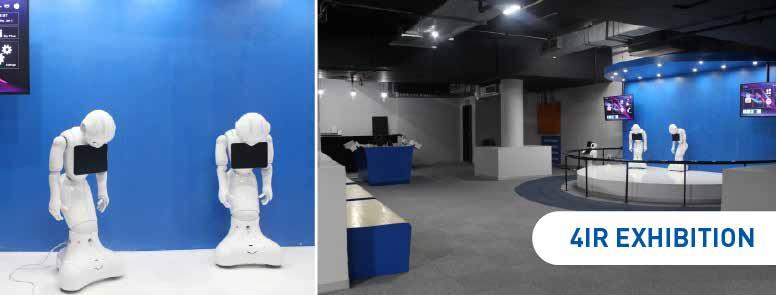
Children are provided with the opportunity to play games to train their analytical ability, improve their ability to solve puzzles and chal-

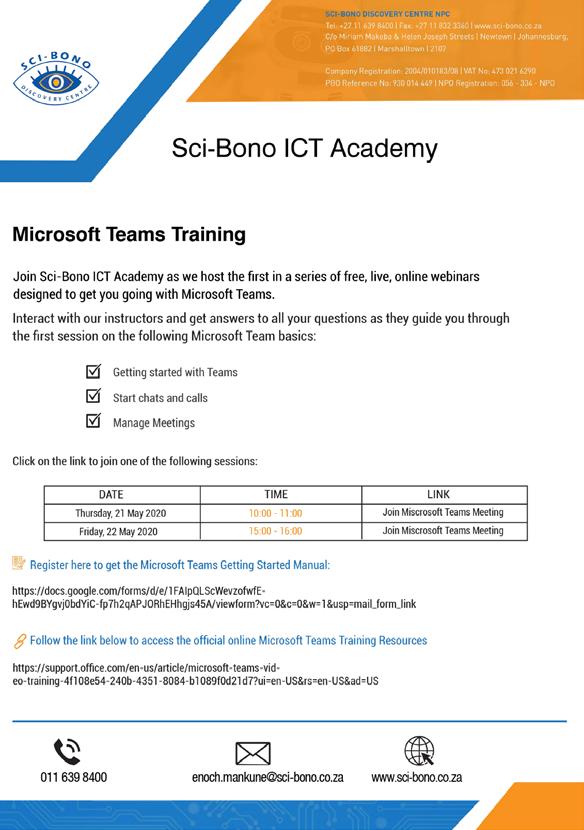
lenges. They are also challenged to explore more traditional content style, such as exploration of subjects including how Artificial Intelligence works, Machine Learning, how data transfers over networks etc.
While traditional science teaching has complex challenges around logistics, safety and costs. VR has none of these limitations. Experiments are done as often as needed with no physical costs of materials or safety concerns. Students can learn about physics and chemistry, life science etc. in a safe environment. Within VR learning occurs without any distract but with full immersion. Learning and understanding mathematics becomes easier and more fun inside of VR due to the nature of games and how they are designed.
This is designed to make learning and exploration real fun especially for little ones. Wide learning opportunities exist through this exhibition, children have many prospects to learn on, e.g. google earth exploration experience.
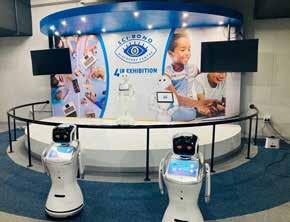
With Google Earth VR, children can travel to almost any place in the world. They can fly all over the world and explore any city, any monument and landmark anywhere in the world.The exhibition has two different types of humanoids the small one (called Sanbot Max and the Bigger one called Pepper).
The Sanbot Max robot was designed to be implemented into numerous kinds of business scenarios, providing customers and staff members with intelligent and efficient services.
Pepper is a semi-humanoid robot, which means that a human has to control it. It is designed with the ability to read emotions. Pepper recognizes faces and basic human emotion.
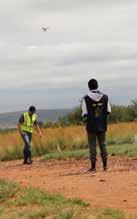
Did you know that the Clubhouse has three certified drone pilots?
They also have 10 DJI Tell drones that they will used for their drone course.
They are currently putting together content for the said course.
In addition, the Clubhouse offers programmes such as Teach Fundamentals of drones, real-life applications of drones: namely surveillance using object identification and tracking to videography for commercials and other media use.
This includes python programming that covers drone automation.



A mirror is an object that reflects an image. Light that bounces off a mirror will show an image of whatever is in front of it, when focused through the lens of the eye or a camera.
Mirrors reverse the direction of the image in an equal yet opposite angle from which the light shines upon it. This allows the viewer to see themselves or objects behind them, or even objects that are at an angle from them but out of their field of view, such as around a corner.
Natural mirrors have existed since prehistoric times, such as the surface of water, but people have been manufacturing mirrors out of a variety of materials for thousands of years, like stone, metals, and glass. In modern mirrors, metals like silver or aluminum are often used due to their high reflectivity, applied as a thin coating on glass because of its natu- rally smooth and very hard surface.

A maze is a path or collection of paths, typically from an entrance to a goal. The word is used to refer both to branching tour puzzles through which the solver must find a route, and to simpler non-branching patterns that lead unambiguously through a convoluted layout to a goal. The pathways and walls in a maze are typically fixed, but puzzles in which the walls and paths can change during the game are also categorised as mazes or tour puzzles
Mirror Maze
The mirror maze itself is a pattern, combining several characteristics of geometric patterns: repetition, symmetry and tessellation using repeated equilateral triangles. These triangles fit together without any gaps or overlaps, creating a tessellation. Mirrored surfaces all around reflect the pattern so that it repeats and appears infinite.

Randice-Lisa “Randi” Altschul (born 1960) is an American toy developer and inventor based in Cliffside Park, New Jersey.

With little technical training or engineering knowledge, she developed toys and board games that saw great success. As a result, she became a millionaire by the age of 26.
Her board game Miami Vice, inspired by the television series of the same name, would be further developed into Grand Theft Auto: Vice City by Rockstar North, which went on to become one of the best-selling games in 2002.
After her success in the toy industry, Altschul founded Diceland Technologies and invented the first disposable phone.
While driving down a highway and talking on her mobile phone one day, she became frustrated with the signal of the phone and wanted to throw the phone out of the window.
This moment was in her mind for quite a long time, which eventually pushed her to seek an alternative option to mobile phones.

In November 1999, Altschul teamed up with Lee Volte, the Senior Vice

President of Research and Development at Tyco, to create the first disposable phone. Their product was called the Phone-CardPhone because it was the size of a phone card.
The phone was less than a quarter-inch thick and was made of materials based on recycled paper. The phone also had a chip on it that allowed the owners to make purchases and use it as a credit card. In essence, this was the first attempt at mobile payment in history.
The phone would sell for around $20 and could be used for up to one hour. People who returned the phone after usage would receive a credit of two to three dollars.
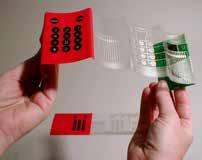

In 2002, the Phone-Card-Phone was named “Product of the Year” by Frost and Sullivan. Altschul and her company, Diceland Technologies, envisioned prospective customers of the Phone-Card-Phone as people who were not impressed by the latest technology or women who just wanted to ensure that their sons and daughters would be able to make phone calls to them and their families.
Altschul aimed the marketing at those people who would not be interested in a long-term mobile phone contract or tourists who may not usually need a phone but would need one whilst holidaying abroad for the short period of their vacation. (All from Wiki)



Victor Mills was an American chemical engineer for the Procter & Gamble company. He is most credited for the creation of modern disposable diapers and the Pampers brand.
Within P&G he is regarded as the most productive technologist in the company’s history. Therefore, when the company formed an honorary society for their engineers, it was named the Victor Mills Society.
He was hired by Procter & Gamble right out of college and moved to the Cincinnati, Ohio, headquarters of the company.
His first major innovation was converting soap production from a batch process—basically cooking in large cauldrons—to a continuous stream operation, which cut production time for Ivory soap from seven days to just a few hours.


He then applied ideas from soap chemistry to improve the production of cake mixes and peanut butter, among other products.
During World War II he was involved with the production of synthetic rubber with Waldo Semon, the inventor of vinyl, who

was his mentor at the University of Washington in the early 1920s.
After the war, Mills headed up the Exploratory Development Department of P&G, responsible for finding new lines of product for the company.
In that capacity, he conceived and led the development of Pampers during the 1950s.
It was the world’s first widely marketed disposable diaper, and currently P&G’s largest brand by sales revenue.

His last project was to oversee the development of Pringles. This potato snack is made using a slurry of potatoes, flour and flavorings which is pressed and dried into its distinctive shape: the process owes a lot to Mills’ earlier work producing soap flakes.
He retired to Tucson, Arizona, in 1961 and spent his time on his hobbies.
He had an extensive garden of cacti and other plants of his adopted Sonoran Desert region.
He traveled the world, both on cruise ships with his wife, and on hiking expeditions.
At one point, he was the oldest man on record to have climbed Mount Rainier, and likewise Point Lenana on Mount Kenya. He got to smell the coffee!
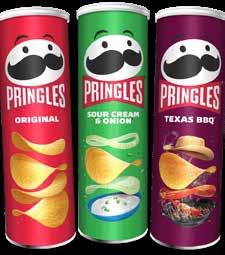

It all ended on Valentine’s. dramatic finish after all.
But who exhibited what? And were there any trends around?
Here is what I got from CNN

Thom Browne kicked it off with some rather gothic (in my opinion) over-sized jackets and silk and more. It was inspired by a poem by Esgar Allan Poe – The Raven - and that was easy to see (and hear as it was narrated throughout his show).
Rather gory really, but it probably heralded what we will see later this year.


Hilfiger was there. They somehow got in on the venue – new York – and channeled their line into something both nostalgic and going forward. Again we saw loads of heavy jackets, boots galore and layers of fabric.
Either it is the trend or the winter is going to be arctic!
However, I liked the Hilfiger look. It is classic and it is easy to recognize. This year we again saw the Hilfiger colours but also in new styles.
The fabric was again Hilfiger fabrics. And it all just looked


good and easy to wear.
Extravaganza is the word! The Blondes fired it up – literally – with the collection ‘fuego’ inspired by South America.
And this was fire! I quote from CNN: ““It’s a declaration of identity, a celebration of life, and an affirmation of the enduring flame that burns within every Latin heart,” the show notes explained. That should make it clear.

One way or the other: there is something ‘demonic’ about black and red together. Black and red-hot fire. The passions on fire. Classic.

Carolina Herrera was into embroidery and classic shapes. Floral prints galore and again signature style. It just looked good!
Now see for yourself:

... and some overall pics:






It is going to be jacket and boots time – again.
This time it looks (if we can get some pointers from NYFW) as though the jackets will be bigger and more ‘fluffy’.
Of course we see knitwear but it is all mixed in with more modern fabrics this time.
The classic look will still be there. And that is Hilfiger and Carolina. No doubt about that.
Where to find it? Well, what about Zara and H&M.












Maybe not 10 phones, but some at least.
2024 seems to be the year for massive new things in the cell phone market. We are in for some rather significant things.
I found an interesting article here. It is written by
Lisa EadiciccoIt is Samsung, Oppo, Google and iPhones that will dominate the market and those are the ones to look out for.
It had to happen and it is happening in 2024: AI for your phone! I quote: “Generative AI, or AI that can generate content when prompted based on training data, had a breakout moment in 2023 thanks to the success of ChatGPT”.

Samsung:
iPhone 16
iPhones release new models every September. This year we can expect a better microphone (Siri) and a better telephoto zoom. It is rumored it will be 5x rather than the current 3x.
Samsung will carry on with its flip-phone development. Whether it is a gimmick or really improve our lives is a good question. It is really not anything technology.

There will be a new processor and it will be fast! I quote: “Qualcomm’s new Snapdragon 8 Gen 3 processor and Galaxy AI just like the Galaxy S24 lineup.
Google is in on it all: It is all AI now and Google has managed to build on the raw licenses to come up with something useful.
New recorder apps, conversation summaries and much more.
The new Google’s might be bigger, and the cameras will be improved (good idea btw).
We may also see a new processor, but that is still to be announced.
Oppo:

This I got off their website. I am totally bowled over!
Oppo Reno 11 Pro is the magic word. 32-50 MP telephoto camera is impressive al by itself. 112 degree wide camera setting. But it is the software that I am hooked on.

12GB RAM and 512 GB ROM memory should be enough for a little while, together with a new battery that is.
Combined with a flash charger, we are talking days if not weeks now.
In essence: welcome to your new phone in 2024
The National Student Financial Aid Scheme (NSFAS) is a government entity under the Department of Higher Education and Training (DHET)
Supports access to and success in, higher education and training for students from poor and working-class families who would otherwise not be able to afford the cost of studies at a public university or Technical and Vocational Education and Training (TVET) college.
•Provides financial aid to eligible students who are studying or plan to study at any of the 50 TVET colleges or the 26 public universities in South Africa
•Identifies students who qualify for the bursary
•Provides bursaries to students
• All South African citizens
• All SASSA grant recipients
• Applicants whose combined household income is not more than R350 000 per annum
• Persons with disabilities with a combined household income of not more than R600 000 per annum
• Students who started studying at a university before 2018 and whose household income is not more than R122 000 per annum
What does the NSFAS bursary cover?
• Registration
• Tuition
• Book allowance
• Accommodation allowance
• Transport allowance
• Food allowance
• Personal care allowance
Does the NSFAS bursary offer any additional support for students with disabilities?
Yes, NSFAS further supports funded students with disabilities through an additional allowance that covers:
• Medical assessments
• Assistive devices
• Human support to cover for the cost of a caregiver, guide dog, scribe or tutor.
How, where and when can one apply for NSFAS?
The 2021 application season will be communicated through media, social media and the NSFAS website www.nsfas.org.za.
Applications are submitted online through the NSFAS website: www.nsfas.org.za
To apply for NSFAS funding students must have a registered myNSFAS account If you plan to study in 2021 and require support from NSFAS, you may open your myNSFAS account now to keep updated with the latest funding information.
Connect with us using the following channels:
National Student Financial Aid Scheme myNSFAS myNSFAS
NSFAS Connect: www.nsfas.org.za and log into your myNSFAS account
NSFAS Connect gives you access to quick facts and frequently asked questions. Applicants and students can also submit and track a query for further assistance.
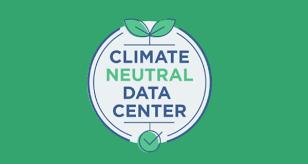
We have written now a lot about things we can do, based on greenhouse gas emissions. There are different industries who are polluters, but they are also doing something about it.
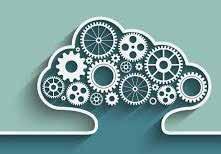
Here is one that otherwise would not immediately spring to mind: The big data centres housing the ‘cloud’.
This really sounds a bit over the top? A handful of computers and some internet modems?
According to Wiki it is not just… “[…] infrastructure for power supply, data communication connections, environmental controls (e.g., air conditioning, fire suppression), and various security devices. A large data center is an industrial-scale operation using as much electricity as a small town”. We are looking at close to 2% of the worldwide electricity demand.
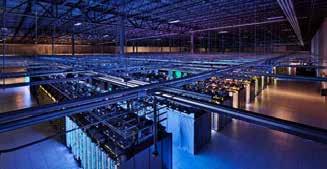
First of all: a centre older than five years is obsolete. Out with the equipment and in with something new. Imagine the electronic waste. It is also spurred by the growth in data storage, estimated to be 163 zettabytes by 2025.

Google did something about all of this. The did not just use off-the-shelf computers. They stripped the servers down to the essential stuff. That meant that graphic cards got out, extra slots got out, etc. That apparently saved them some 30% of the electricity bill. That is not a small amount after all.
There are two things that determine the electricity consumption: The electronic equipment itself and then the cooling of it all. Electronics emit a lot of heat!
Modern data centre cooling might be 10% of the electricity consumption, but can be as much as 45% in older ones (like less than five years old that is).
Amazingly, but it is not just hurling a server park together, tie it up with the cabling to the modems and install the aircon.
A modern data centre is a complex organism. Some server racks (high-density) need more cooling. So the placement within the building is important. The same goes with the modem racks and the rest of it.

That is why there is a new discipline in data centre design: Computational Fluid Dynamics and Thermal Zone Mapping.
This is simulations of the layout of these massive data centres where it is possible then to balance the cooling and to have the least electricity bill.
This is just not simple!


The cooling is the factor that a data centre can do something about.
Location: Insofar as a data centre is not reliant on the users being around the physical building and the amount of staff needed is not great either, the trend is to build a data centre in ‘cold’ regions of the world. That means that the outside air can cool the centre.

Artic data centres are becoming reality, as well as in Finland, Sweden and so on. All in cold places.
However, there are also other tricks. Air cooling is an expensive thing. But water cooling is not.
The big thing here is that it I s possible to re-use the heat in the hot water for different purposes. No need for air-based heat pumps. This is proven technology.
So, how to get the electronics cooled with water (or other liquids):
Wiki: “Different liquid technologies are categorized in 3 main groups, indirect liquid cooling (water-cooled racks), direct liquid cooling (direct-to-chip cooling) and total liquid cooling (complete immersion in liquid.

Indirect cooling is rather simple. The plates of the racks are water-cooled.
The electronics are not in contact with the liquid, but insofar as the ‘motherboards’ and plates are cooled, the chipsets are cooled as well.
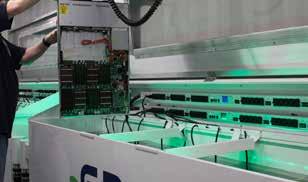
The direct liquid cooling is a bit more technical. It is comparable to the water-cooling of a car engine. Here is a water tank and a pump. The water circulates around the (protected) electronics and will cool it all down. The ‘hot’ water can be re-used via a heat pump.
The more fanciful one is total immersion. Wiki: “Immersion cooling is an IT cooling practice by which complete servers are immersed in a dielectric, electrically non-conductive fluid that has significantly higher thermal conductivity than air. Heat is removed from a system by putting the coolant in direct contact with hot components, and circulating the heated liquid through heat exchangers.
However, water cannot be used (of course) as water can conduct electricity. The fluid used is non-conductive so there is no way it can shorten the boards.

It looks a bit hectic (in my opinion) to see boards and racks and whole computers dumped into a tub of ‘water’, but it is highly effective.

And the heat can be reused. To attach a heat exchanger is a simple process.

In our quest to reduce our greenhouse gas emissions and thereby decrease global warming, we have to look at nuclear energy.

COP28 in December 2023, the Nuclear Energy Agency (NEA) and the International Energy Agency (IEA) pointed out a few astonishing facts.
The climate targets might be seen as ambitious and hard to achieve, but really represent the necessity. No way out of it.
Renewable energies by themselves will not be able to achieve the targets set. It is a question of ramping up the construction and finding locations.
Traditional big nuclear plants simply take too long to build (20 years or more), are highcost items (as it is bespoke construction) and prone to over-running time frames and costs.

It leaves a gap in any energy plan for the world.
One solution is to embrace new nuclear technology: Small Nuclear Reactors (SMR).
Wiki: “The Nuclear Energy Agency (NEA) has launched at the COP 28 a
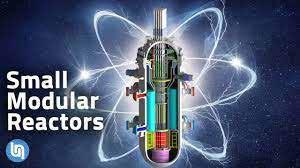
new initiative “Accelerating SMRs for Net Zero” to foster collaborations between research organizations, nuclear industry, safety authorities, and governments, in order to rapidly reduce carbon emissions for reaching the net zero emissions targets required before 2050 to limit the Earth global surface temperature increase.
In February 2024 European Commission has recognized SMR technology as an important contribution to decarbonization as part of EU Green Deal”
In essence: we are talking thousands of SMRs.
What is the design philosophy then?
The design goals are:
• Industrial manufacture – high-volume, reducing the cost per unit
• Latest technologies – get to generation IV and V,
• Few staff to run it – make it self-contained
• Modular – units can be added on to form higher-output
• Passive safety – automated and not depending on operators
Are we there yet? Not so fast. It is still complicated.
Although we have had small reactors around for many years, the experience and feasibility is not obvious.
True, we have seen nuclear submarines around, the big Russian ice breakers and so on. But there is a difference.
These designs are old. The power output is low (not much power is needed to drive a propeller) compared to what is needed if we should drive a small city.


The overall climate goal is to reach net zero by 2050. That has been agreed and is just necessary.
The three global players with the highest emission amounts are US, Europe and China. Sure, the rest of the world is also important, but if these three players can reduce emissions by just a little bit, we can make it.
China is the leading nation in wind and solar energy. China is now the biggest player in SMR developments as well.

Wiki: “China National Nuclear Corporation (CNNC) has developed a pool-type light-water reactor for district heating, called the DHR-400 (District Heating Reactor 400 MWt). It operates at low temperature and air pressure, so is easy to operate and decommission. Building cost is $230 million, taking three years to build. It is well suited for the existing centralised heating systems of northern Chinese cities, currently often coal fueled.
In July 2019, CNNC announced it would start building a demonstration small modular reactor on the north-west side of the existing Changjiang

Nuclear Power Plant by the end of the year. Design of the ACP100 started in 2010. It will be a fully integrated reactor module with an internal coolant system, with a 2-year refueling interval, producing 385 MWt.
In July 2021 the announcement was made that the construction of the first ACP100 has been started. The beginning of the installation phase was announced in December 2022. By March 2023, the main internal structure of the reactor building was completed.
Some of the SMRs being designed by other companies are even smaller. They will be able to power a handful of city blocks and can be transported on a truck.
It does come down to money.
If we can reduce the cost per MW dramatically by having a high output of units and reduce the production time as well, it can be viable.
The traditional plants (20+ year of bespoke construction) suck a lot of capital. Rapid manufacture and deployment of SMRs does not.
Automated and self-contained units will reduce the need for high staff compliments.
So, is it all good and great?

They still need to be safe and nuclear waste must still be catered for. Decommissioning is also an issue. And a lot more as well.
SMRs might not be a silver bullet but it might be the only thing we have.

Without doubt, the guitar must be the most popular instrument we see. Everybody must have tried to play something.
It is an easy thing to transport (well, a tin whistle might be easier, but compared to a concert piano?).

It is the one we see all over in all genres of music. Of course it got very popular in the 1950s and ‘60s, based on the flower-power period. But even so.
There are different versions of the guitar, but let us look at the most common ones:
Traditional guitar. This is the one with the ‘guitar-shape’ and the hollow sound box. The sound box is there to amplify the sound when hitting the strings. It looks like a guitar and it looks like it has been around for centuries.

The other one is the electric guitar. No need for a sound-box. It might

also be called a solid-body guitar. The sound is picked up electronically; hence the guitar can have any shape.
The draw-back is that an amplifier and electricity and so on are all needed before we can start playing.
It is strange really, but nobody really knows where it came from. The likely verdict is that it is like 3,000 years back in time from Babylon.
The more recent addition is of course Spain. The Moors might have brought it along in the 8th century. But it is from about 1600s we see it gaining in popularity. And it is from about 1850 we see the modern guitar as we know it today.

Classical guitar music is worth listening to. It has all the elements of guitar music and points to what we see today.
The popularity is linked to the late 1960s and early 70s – the Vietnam war had a massive impact on the youth culture and the guitar was always there. Listen to these tuens:





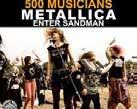 Bach and guitars
Tracy Trapman
Rolling stones
Slade Vietnam Flash mob
Bach and guitars
Tracy Trapman
Rolling stones
Slade Vietnam Flash mob
Dune is set to be one of the big hitters in terms of movies. We did have the intro last month, but let us look a bit deeper. Why Dune?

Wiki: “Dune is an American science fiction media franchise that originated with the 1965 novel Dune by Frank Herbert and has continued to add new publications. Dune was later adapted into a 1984 film, a 2000 television miniseries, and a 2021 film. Herbert wrote five sequels, the first two of which were adapted as a 2003 miniseries.
Frank Herbert died in 1986. Beginning in 1999, his son Brian Herbert and science fiction author Kevin J. Anderson published several collections of prequel novels, as well as two sequels that complete the original Dune series (Hunters of Dune in 2006 and Sandworms of Dune in 2007), partially based on Frank Herbert’s notes discovered a decade after his death.
The political, scientific, and social fictional setting of Herbert’s novels and derivative works is known as the Dune universe or Duniverse. Set tens of thousands of years in the future, the saga chronicles a civilization that has banned all “thinking machines”, which include computers, robots, and artificial intelligence.
Vital to this empire is the harsh desert planet Arrakis, the only known source of the spice melange, the most valuable substance in the universe”.
The first movie was Dune from 1984, which was based on the novel. No deviation there. It was not a big success, but it did gain a lot of press. The bigger impact was that it set the tune for

both follow-on movies and other Sci-Fi movies.
In comes the mini-series Dune from 2000. That got to be a success and then we have the 2003 mini-series as the sequel.
Dune from 2021 is a ‘real’ movie. And this one makes money and cements the fact that Dune is worthwhile. Dune is now an established title.

This leads us to the newest one: Dune Part Two being released in a few weeks time. Can hardly wait, really.

The plots in all of this: look at Wikipedia please



Mario Day is celebrated on March 10, as when that date is presented as Mar 10 it resembles the word “Mario”.

Since 2016 the day has been officially observed by Nintendo, who celebrates the day annually by promoting Mario games and holding Mario-related events.
The character, known today as Mario, first appeared in 1981 in a game called Donkey Kong made by Nintendo.
Dedicated fans knew Mario before his time as a plumber. At his creation, Donkey Kong portrays Mario as a carpenter named Jumpman.
Then in 1983, Nintendo launched a new game in which bad guy Jumpman reinvents himself into an Italian plumber who rescues princesses.
Many will admit, they find the characters endearing. The storylines provide hours of fun and continue to be a part of the pop culture landscape.

Nobody really knows who started Mario-Day, nobody knows of any ‘real’ events, nobody knows a lot about all of this, but to celebrate, find the old game, invite some friends and have a retro-evening.

Tolkien fandom is an international, informal community of fans of the works of J. R. R. Tolkien, especially of the Middle-earth legendarium which includes The Hobbit, The Lord of the Rings, and The Silmarillion.
Tolkien fandom began within science fiction fandom soon after The Fellowship of the Ring was published in 1954.
The large audience of the movies created a stereotyped image of Middle-earth and its races of Elves, Dwarves, Orcs and Hobbits shared by fans and artists alike.


A “Tolkien Reading Day”, held annually on 25 March, an anniversary of the fall of Barad-dûr, was proposed by Sean Kirst, a columnist at The Post-Standard in Syracuse, New York, and launched by the Tolkien Society in 2003
www.TheOneRing.Net is mostly related to the movies, whereas TheOneRing.com is focused on the entire works of Tolkien.

Hola MaHigh-School is YOUR magazine. That is why we would love to see students writing for students about student life and everything of importance to a student in any grade10-12 across the country.


What is required? That is easy: You have to be in grade 10-12somewhere Impeccable in your preferred language-and that might not be English. We try to be more than just English.
Passionate about your topic of choice - no dull articles here.
Do you get anything out of it?
Well, not money, sorrry. BUT if we publish your articles you will have:
Your bio in a commercial magazine
A photo of yourself
You can put it all on your CV you can use us as a reference



Is it important?
YES it is.
Look what Rofhiwa said:
My name is Rofhiwa and I love to write. I have used my skills to express my thoughts on international dealings of the world which have been published in Hola MaHigh-School.
It has paid off, not only is my work printed for young people in the country to read, but it also contributed to me gettng a bursary from CNBC-Africa to do my post-graduate studies.
Would be a lot harder to get by if I didn’t have a platform like Hola MaHigh-School.
What to do? Email me on ivan@romele.co.za:E-mailCellnamenumberaddress ... and we will talk!
Choices and more choices - and it never stops!
This is the theme for next time. We are getting close to finishing school. Maybe there is another year, but we all know: next week that is gone.
So we need to get on with the thinking part. What do we want to do? it is complex.
Maybe not very complex. We should look at what we are interested in. And what we are good at. If we know ourselves we can plot a career path.
That is at least what we will talk about.
But alo the international stuff. And science. And tech. And school things. And TVETs. And ... but you can read that next time.
There will be more about movies and music. I could never leave that alone.
Until next time!




How long is 20 seconds?
Hum the first verse of our national anthem:
Nkosi Sikelel’ iAfrika


